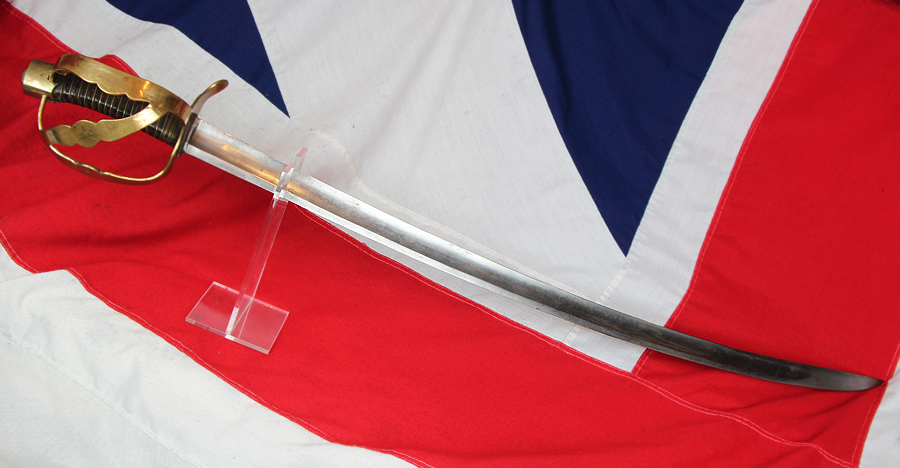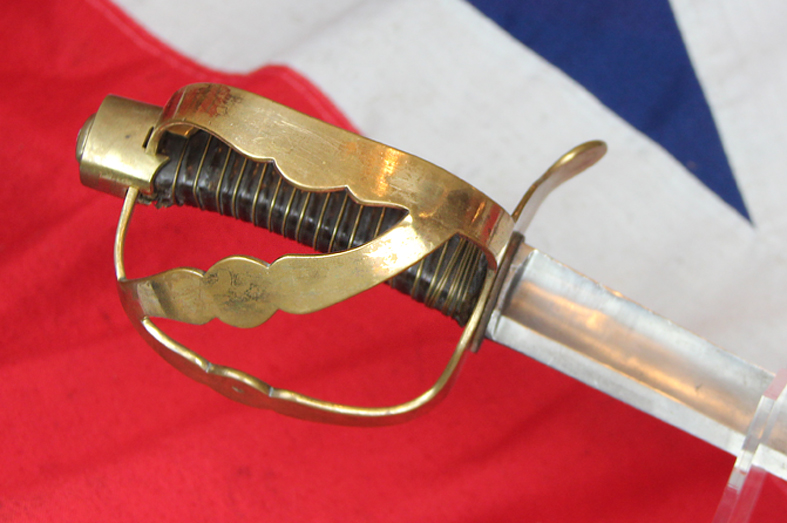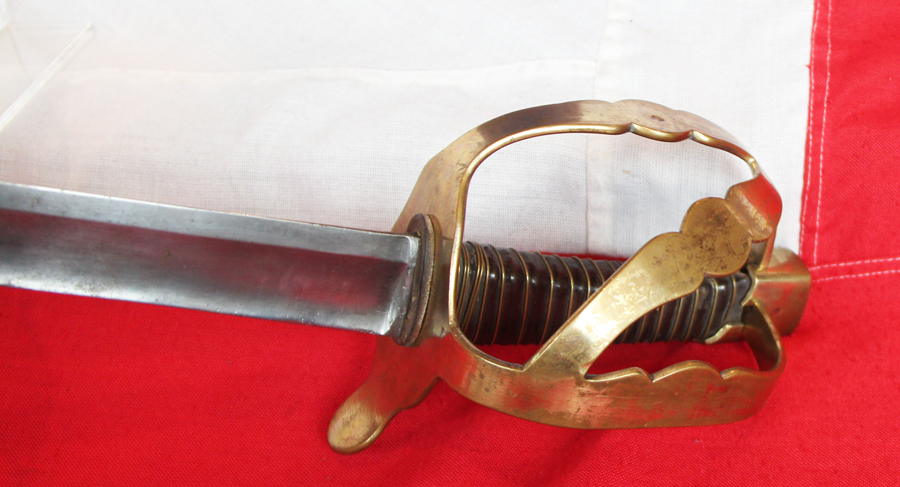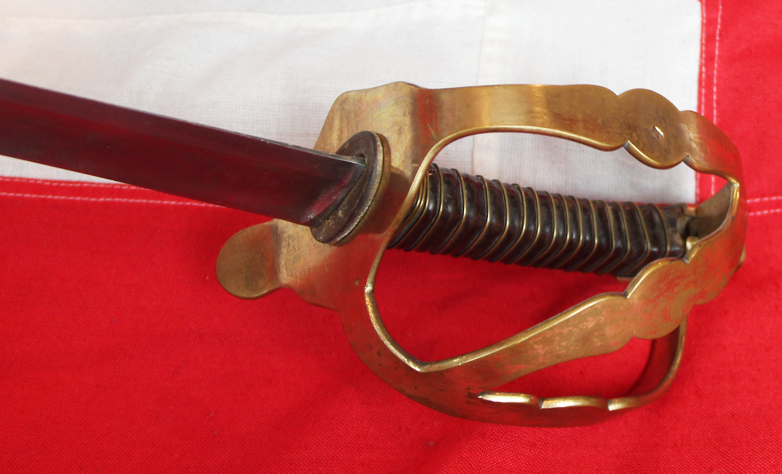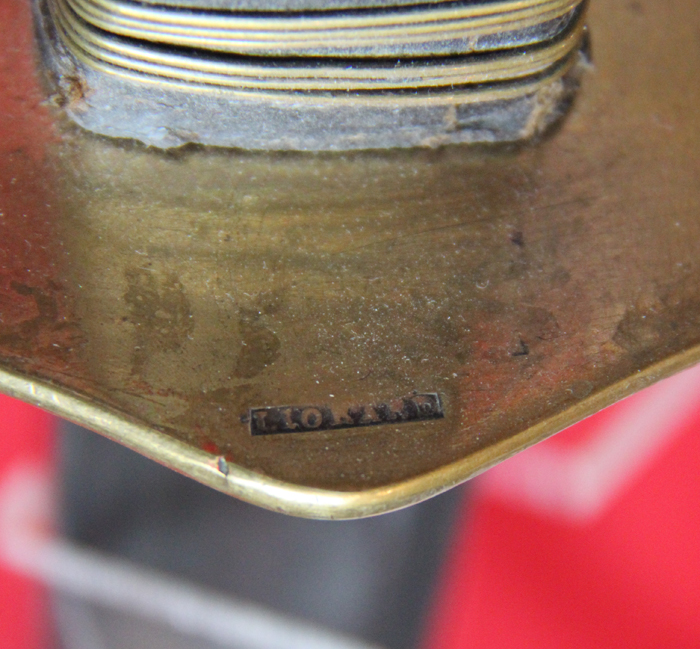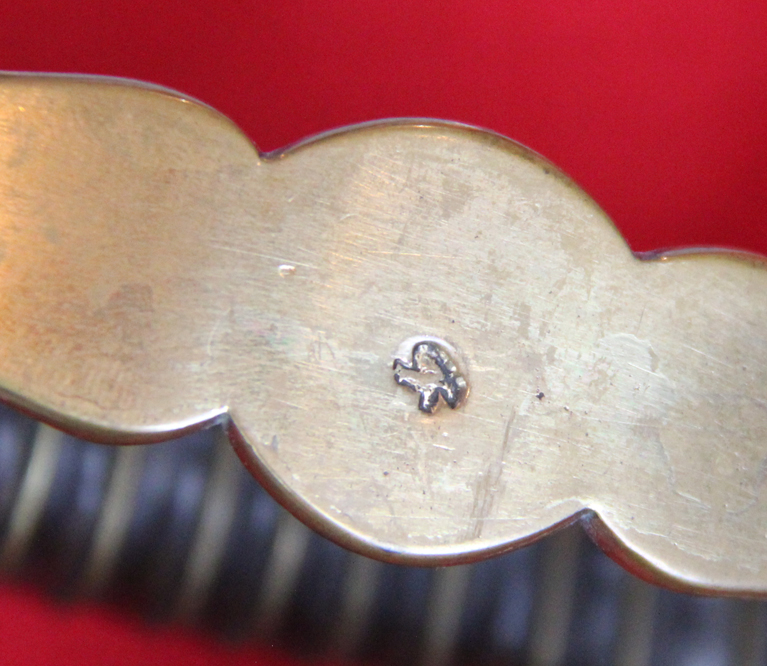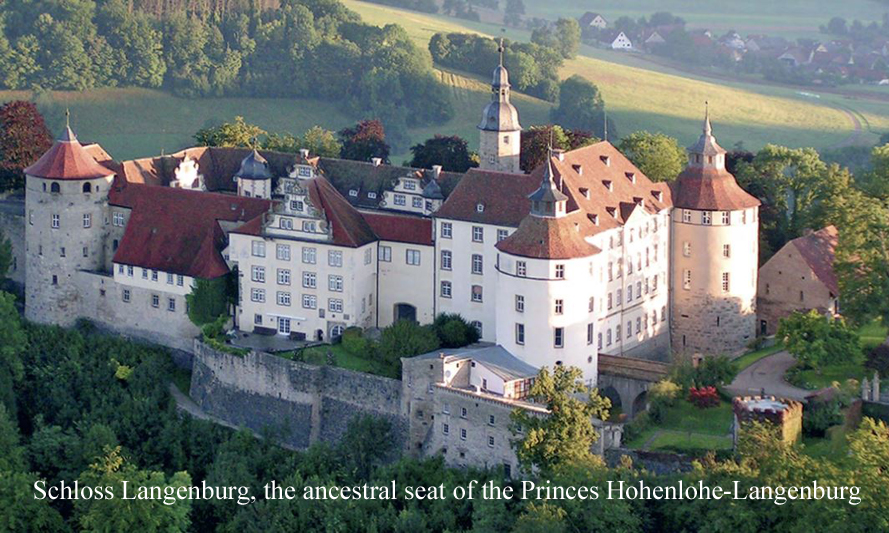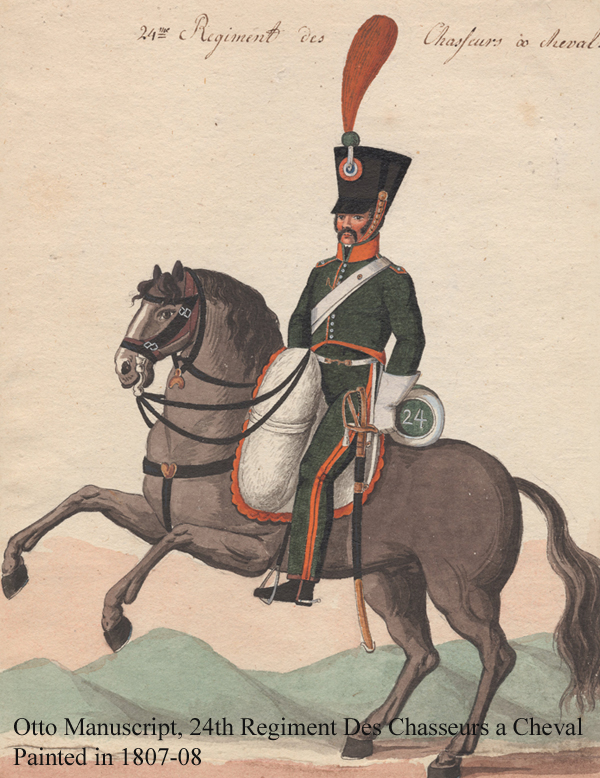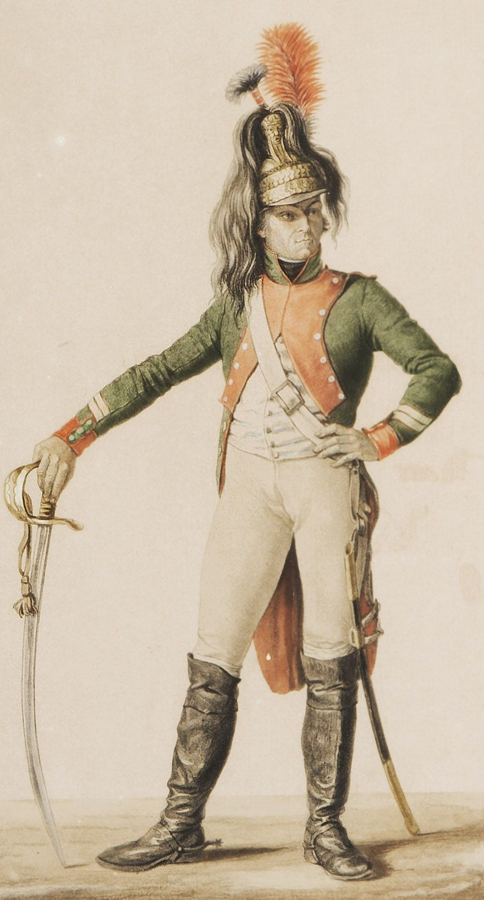A Fabulous Historical Revolutionary War & Napoleonic Wars Chasseurs Cheval Sabre, From the King's Cousin's Castle, Where the Late Queen Spent Her German State Visit in 1965 with Prince Philip
With incredible historical provenence, part of the French war souvenirs from Schloss Langenburg, which is the ancestral seat of the Princes Hohenlohe-Langenburg in Southern Germany, and is today the family home of Princess Saskia and Prince Philipp zu Hohenlohe- Langenburg. The historical arms and armour from the Schloss Langenburg armoury were sold some years ago, and included this fabulous French sword, that was formerly with other weapons cap-tured from the military campaigns of Field Marshal Friedrich Karl Wilhelm, Furst zu Hohenlohe, who served the Habsburg Monarchy, and fought in many campaigns against France. This fabulous and rare French sword was used from the revolution, in the Nile campaign and the Napoleonic wars by the Chasseurs a Cheval. It is mounted absolutely correctly with a blade modelled on the 1781 regulation, with characteristic residual ricasso, gilt-brass hilt of the successive issue type, retaining its original leather-covered grip bound with brass single-strand wire, the blade and the knuckle-guard struck with War Administration acceptance marks, a fasces and a cockerel respectively, and the inner face of the guard with the maker's stamped signature 'Liorard' 92 cm; 36" in blade The fasces and cockerel State acceptance marks were introduced by the Comite de Salut Public in 1793, in place of the marks of military inspectors absent within the revolutionary period. Liorard is recorded as a fourbisseur working at 163, rue de la Verrerie, Paris, in the 18th and 19th century. See M. Petard 1999, pp.122-3, figs. 112a & 112b, pp.180-1, figs. 11 & 17. also Armes Blanches Symbolisme Inscriptions Marquages Fourbousseurs Manufactures by Jean Lhoste and Jean-Jacques Buigne. In 1828, there was the marriage at Kensington Palace of Prince Ernst zu Hohenlohe-Langenburg to Princess Anna Feodora zu Leiningen, the half-sister of the future Queen Victoria. In 1896 Princess Feodora's grandson, Ernst II zu Hohenlohe-Langenburg, married Queen Victoria's granddaughter Princess Alexandra of Edinburgh and Saxe-Coburg-Gotha. Princess Alexandra was the third daughter of H.R.H. Prince Alfred, son of Queen Victoria and H.R.H. The Prince Albert, she was also the grand-daughter of Tsar Alexander II of Russia. The family link between the Windsors and the Hohenlohe-Langenburgs remains a strong one. H.M. The Queen visited Schloss Langenburg during her German State Visit in 1965, together with H.R.H. The Duke of Edinburgh and his sister, H.R.H. Princess Margarita. The original Mercedes 600 in which they toured is today preserved in the Car Museum at the castle. In 1792, Field Marshal Friedrich Karl Wilhelm, Furst zu Hohenlohe was initially placed in command of the 50,000 Austrian forces in the Upper Rhine Valley. In August, his forces crossed the Rhine by Mannheim, and participated in the bombardment of Thionville, on the Moselle, in early September. Although the invading forces of the allies readily captured Longwy on 23 August and slowly marched on to Verdun, which was even less defensible than Longwy. The Duke of Brunswick now began his march on Paris and approached the defiles of the Argonne. In combination with the Army of Conde and Hessian troops, a portion of his force, 15,000, covered the left (southern) flank of the Prussian advance on Valmy.
As a seasoned and experienced officer, he had been chosen as a mentor for the young Archduke Charles, and the archduke was assigned to his force; they were not at Valmy, but could hear the cannonade. The Duke of Brunswick's force was to engage the northern flank of the French army, called the Army of the Sedan, while Hohenlohe-Kirchberg's force engaged the southern flank (Army of the Metz).
In December 1792, Hohenlohe-Kirchberg's forces defended Trier from the Army of the Moselle so well that its commander, General of Division Pierre de Ruel, marquis de Beurnonville, was removed from his command by his superiors in Paris. On 31 December, Hohenlohe-Kirchberg was awarded the Grand Cross of Military Order of Maria Theresa for his success at Trier.
In May 1793, his forces played a decisive role in the victory at the Battle of Famars. He was appointed as General Quarter Master and Chief of Staff to the Coalition's main army in Flanders, succeeding General Karl Mack. As part of the Belgian Corps under Field Marshal Saxe-Coburg-Saalfeld he played a decisive role in the action at Avesnes-le-Sec and later at the Battle of Fleurus (1794). Subsequently, Hohenlohe-Kirchberg commanded a corps on the upper Rhine and was responsible for the recapture of Speyer from the French on 17 September 1794. His second in command was Friedrich Karl Wilhelm, F?rst (prince) zu Hohenlohe-IngelfingenIn later Field Marshal. Ijn 1801, Prince Friedrich Karl Wilhelm was appointed Colonel (Inhaber) of 7th Dragoon Regiment. Prior to the Capitulation of Ulm, he, Karl Philipp, Prince of Schwarzenberg, and Archduke Ferdinand d'Este broke out of the French cordon surrounding the city and escaped to Bohemia, hotly pursued by the French cavalry. On the 5th of November, he commanded an Austrian cavalry column at the Battle of D?renstein and a few weeks later, he commanded the Austrian cavalry at the Allied defeat at the Battle of Austerlitz. This wonderful sword has its original wire binding over the original leather grip, it is in very good condition indeed and has an excellent blade. No scabbard.
Code: 22862

